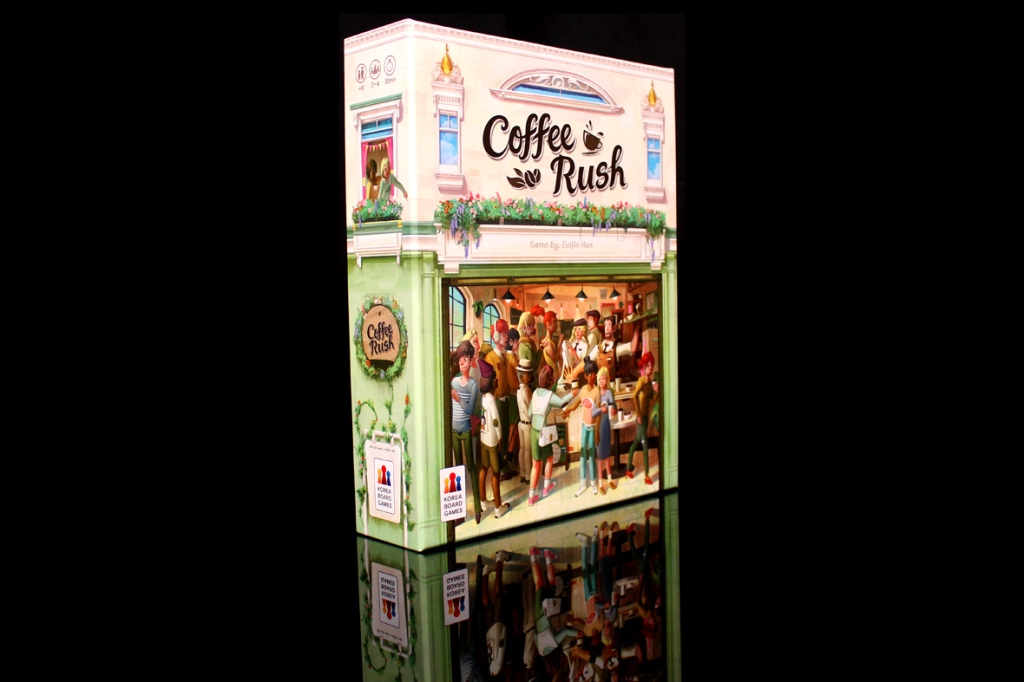
Base price: $35.
2 – 4 players.
Play time: ~30 minutes.
BGG Link
Buy on Amazon (via What’s Eric Playing?)
Logged plays: 3
Full disclosure: A review copy of Coffee Rush was provided by Korea Boardgames.
I’m still trying to find the perfect writing music. Lately, it’s been video game music, but sometimes I want something with a different vibe. Almost all of my playlists are a mess and my Spotify recs are terrible because I listen to stuff that’s all over the place, so it can’t get a clear read on what it should recommend me. In my opinion, it shouldn’t rec video game stuff as much since that usually requires me to have played the game. Without context, it’s tougher, though I am currently listening to a song from a game I haven’t played while I write. It’s fun to contain multitudes. But let’s talk about our next game, Coffee Rush!
In Coffee Rush, players have to manage their very own coffee shop! As a person who doesn’t drink coffee, this would be wildly out of my depth, but it’s not the first time I’ve tried to broaden my horizons to no avail. We’re working on it; I can now enjoy coffee-flavored things, which is a big step. Anyways. The other players have their own coffee places, too, and you’ve just hit the big breakfast rush. Orders are coming in and you can’t afford to have bad reviews (paying Yelp off is pricey, I’m told), so you need to get in there and start making drinks as fast as you can. Dance around your opponents to grab ingredients to satisfy your customers. Will you be able to manage the queue, or will you be the one getting served?
Contents
- Setup
- Gameplay
- Player Count Differences
- Strategy
- Pros, Mehs, Cons
- Overall
Setup
Set the board in the center:

Give each player a player board in their color:
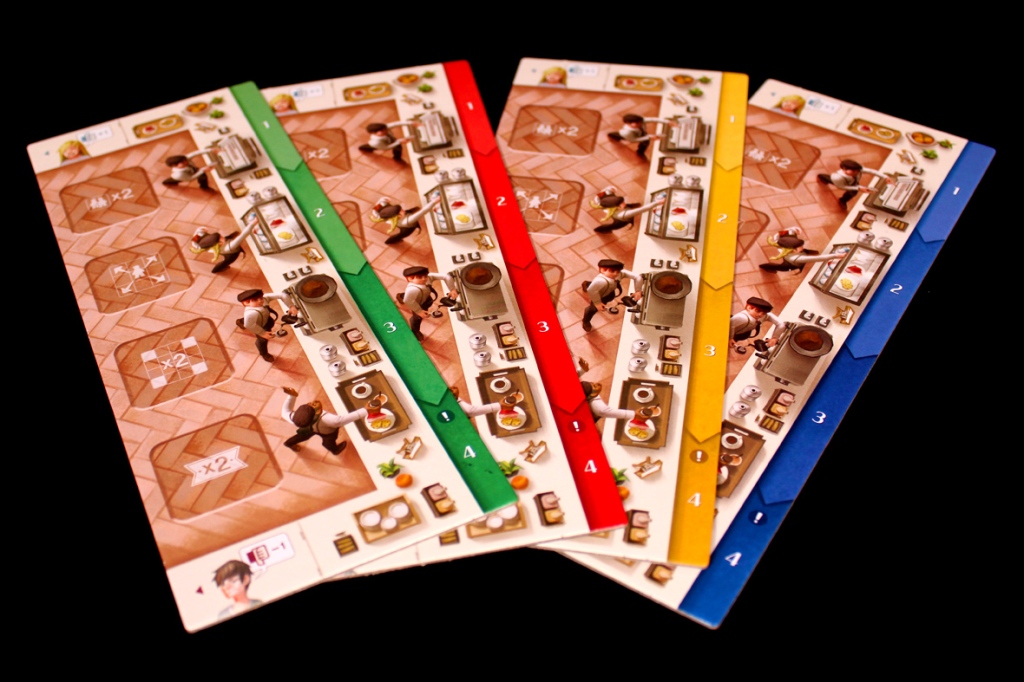
Give them each one meeple as well. In a two-player game, you’ll play as green and pink and use two meeples each:

Give each player four Upgrade Tiles; they should be placed face-down.

Set the ingredients nearby:
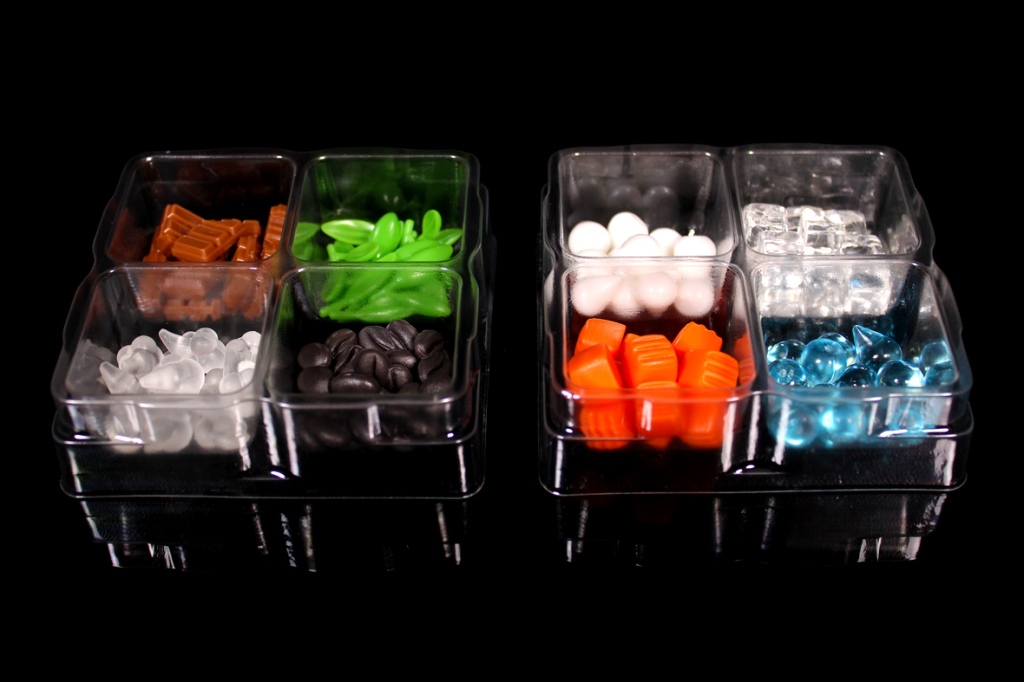
Each player gets three cups:
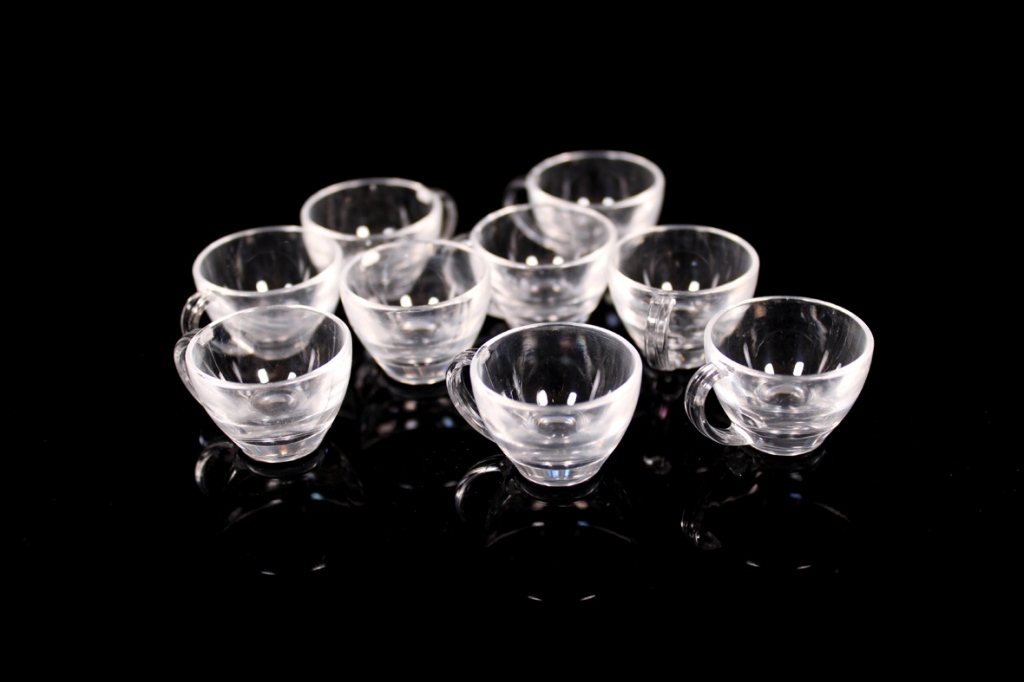
Shuffle the order cards. Each player places one card on their first row and one card on their second row. The first player places an additional card on their first row.

In reverse player order, each player now takes turns placing their meeples on the board. When you place a meeple, gain that resource to any one of your cups. Set the Rush Tokens aside, for now:
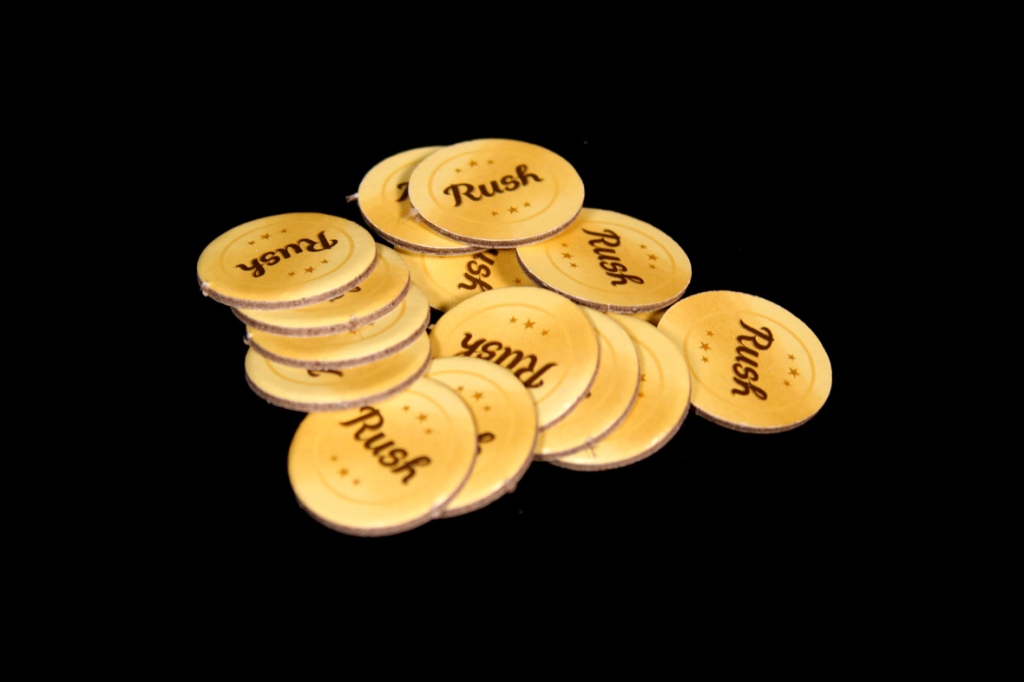
You should be ready to start!
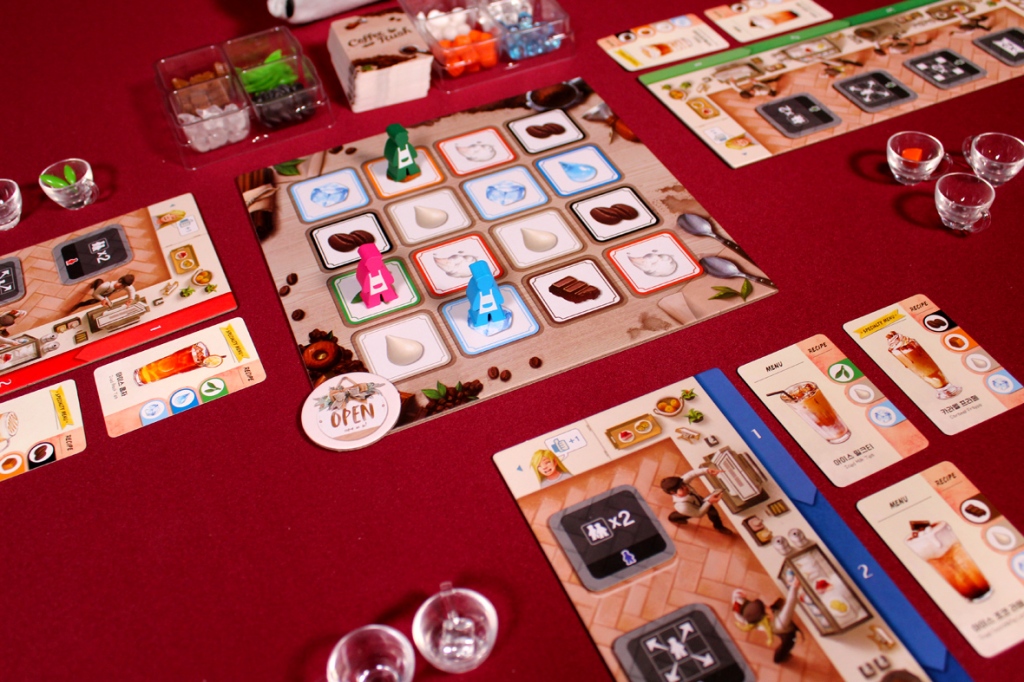
Gameplay
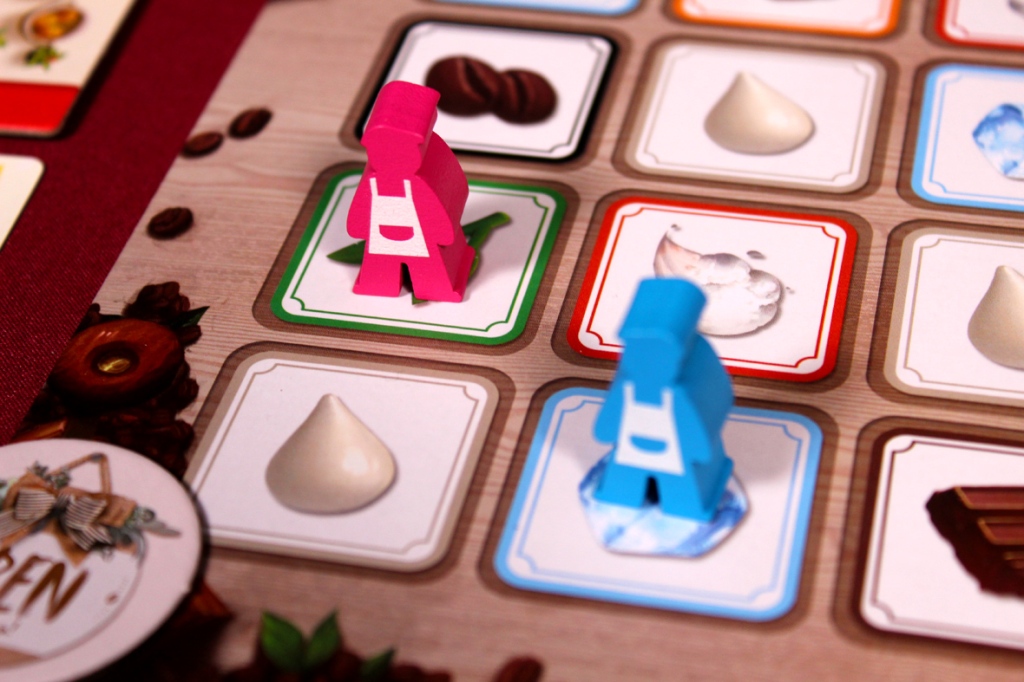
Coffee Rush is played over a series of rounds as players try to serve as many folks as possible while avoiding bad reviews. It can be a tough one!
To start a player’s turn, if they have three completed Order Cards, they may remove them from the game to flip one of their Upgrade Tiles to the active side, allowing them to use that ability moving forward.
Next, the player may move their meeple up to three times. If they have Rush Tokens, they may spend as many as they want to gain up one additional move per Rush Token spent. A legal move is any orthogonal move, and while you may move through another meeple, you cannot end your turn there. Each time you move to a space, gain that corresponding ingredient. Once you’ve completed your moves, assign each ingredient to a cup (or return it to the supply). If you don’t like the ingredients currently in a cup, you can pour out the cup and return all ingredients in the cup to the supply.
Now, for each cup with ingredients, if the ingredients in that cup match an Order Card, that Order can be fulfilled. Discard the ingredients and place the Order Card at the top-left of your player board. It’s now Fulfilled, and can be spent for Upgrade Tiles later. When you fulfill an Order, each other player must draw a new Order Card and add it to their first row.

After doing that, all your Orders move down one row. If any would move off the board, they’re placed face-down on the bottom-left of your player board in your Bad Reviews. They’re worth -1 point at the end of the game. Rough!
Play continues until the Order Deck is depleted or any player has five Bad Reviews. Complete the round and then go to final scoring. Each Fulfilled Order you have left is worth +1, Upgrade Tiles are worth +2, and Bad Reviews are worth -1. The player with the most points wins!
Player Count Differences
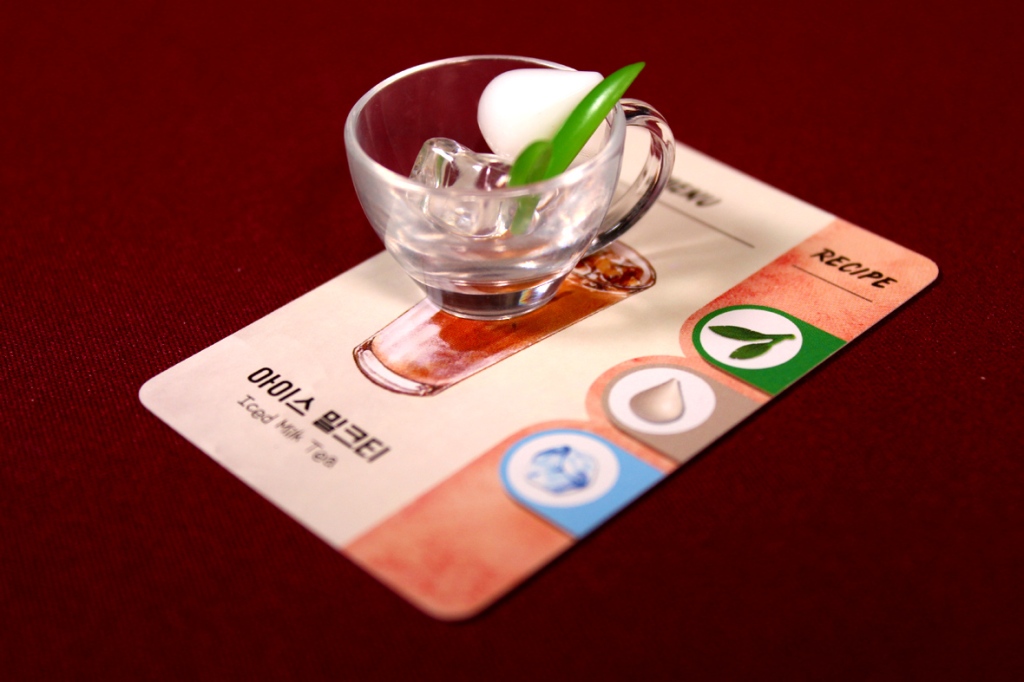
The major difference is between two and not-two players. With two, you get two meeples each and can move them independently (albeit not both on the same turn). While this frees you up for some options, it means that there are also additional “blockers” on the board. You can move through them but not stop on them, so you might have to change your route based on where you want to finish. The amusing part of this is, however, your meeples still count for the Upgrade Tile where you get double ingredients on occupied spaces, so you can sometimes make this work in your favor rather than against you. So that’s something. I think the game really sings, strategically, at two. With more players, you’re getting a lot more potential orders each round (you gain one every time another player fulfills one), so with four players you might be getting battered. Imagine every other player completing two orders on their turn? Yikes.
Strategy

- You really need to be fulfilling at least one recipe per turn, if you can. It’s kind of the core loop; if you’re not fulfilling at least one per turn, you’re going to start hemorrhaging recipes as the game goes on.
- Watch out for getting inadvertently blocked by opponents! Opponents cannot block you per se, but the tiles that they finish on become spots that you cannot stop on yourself, on later turns. This can really mess with your planned route to retrieve certain ingredients if you’re not careful.
- Upgrade Tiles can really make or break things for you. You should be flexible to figure out how certain Upgrade Tiles work with what you need. Look to your Recipes for this: do you need basic ingredients (look for the upgrade that doubles corner output)? Do you need more special ingredients (the upgrade that doubles those)? This is an important part of the strategy process, I think.
- If you have to pick something to prioritize, go after things that are about to expire. If they’re all the same and they have the same ingredient cost, might as well save yourself a penalty.
- There are often multiple ways to get what you want. There’s not necessarily one path to get the ingredients you need, especially once you get the diagonal movement. Have some backup plans in case you can’t end where you want.
- Upgrade Tiles do stack; use that to go into overdrive, I suppose? You can double a double spot, if another player is on it and you have the correct Upgrade Tiles. It’s pretty great. Just remember that, you know, you likely can’t use all of those ingredients at once. Taking a ton is cool but otherwise, yeah.
- Keep an eye on when the game is going to end; Upgrade Tiles aren’t always worth it. Upgrade Tiles are explicitly worth -1 point relative to having three fulfilled Order Cards; if you think the game is going to end before your next turn or you’ll only have one more turn, it might not be worth getting an Upgrade Tile you’re not really going to fully utilize.
Pros, Mehs, and Cons
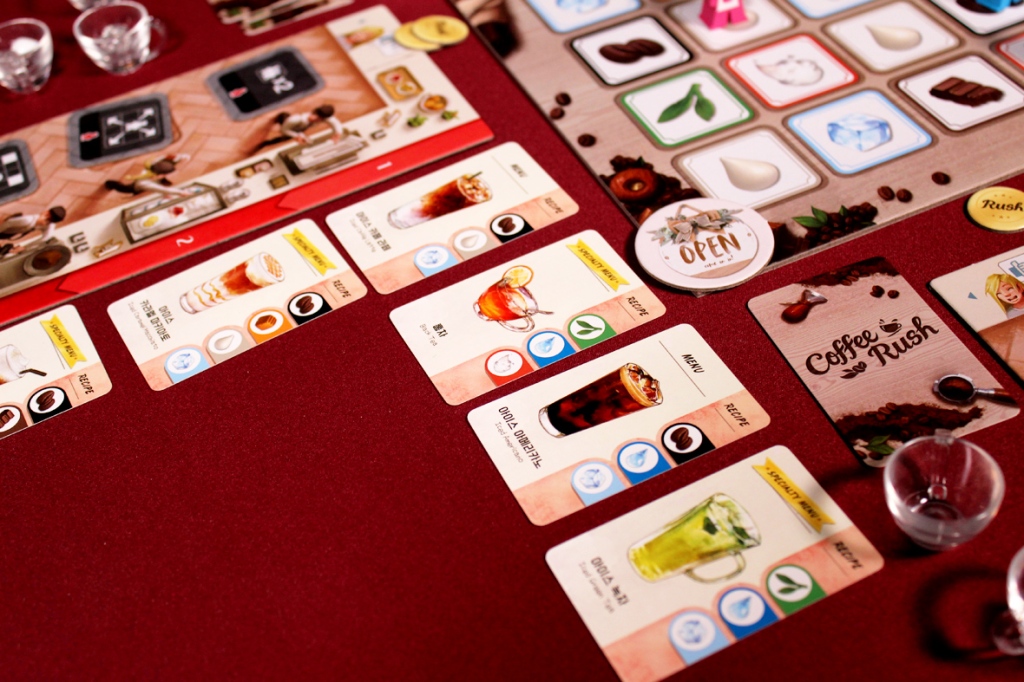
Pros
- The theme of this is really fun! I like games where you’re running a restaurant or a cafe; it occasionally makes me think that would be a fun thing to do in real life until I remember working at the Outback Steakhouse in my youth. That sucked!
- There’s a lot of interesting puzzle to this. It’s all optimization, but with some spatial elements, which makes it a lot of fun to have to physically move to solve your problems.
- I like the growing dread of the order queue spiraling out of control. There’s nothing you can really do about it, per se, but you get to enjoy chipping away at a larger problem.
- The components are super fun! Seize the Bean has a similar thing going on but the little milk droplets and caramels and such are delightful.
- I like that players can pursue their own upgrade paths, specializing within their play style with a mini skill tree. Granted, there aren’t that many upgrade paths, but you do have the option to do some specialization, which can be pretty cool. Seeing players pull off big swings because they planned ahead is super cool, too.
- The art is very pleasant. It’s a relaxing game to look at.
- The game just strategically works; it’s quite clever. I think that figuring out how to work the optimization puzzle within the spatial constraints is not obvious to many players on their first attempt, especially since this game seems to be targeted towards a crowd that favors a lower complexity.
- As a not-coffee drinker, I appreciate that the shops have non-coffee options. It’s nice to be able to order other things.
Mehs
- Some of the icons and materials can be a little challenging to tell apart. I just end up grabbing the wrong thing every so often, which can be messy. Moving to the wrong space for something you want, however, is real bad. Pay attention to what you’re going after.
Cons
- There’s a lot of frustration potential, here, so be kind to other players. Things like having to dump an entire cup and the similarities / lack of 1:1 between some of the symbols and their cards can be frustrating for players, too. I just ask that you let new players maybe rethink their moves if they’ve made a mistake, as having to dump a cup full of ingredients that can’t be brewed feels bad.
Overall: 8 / 10
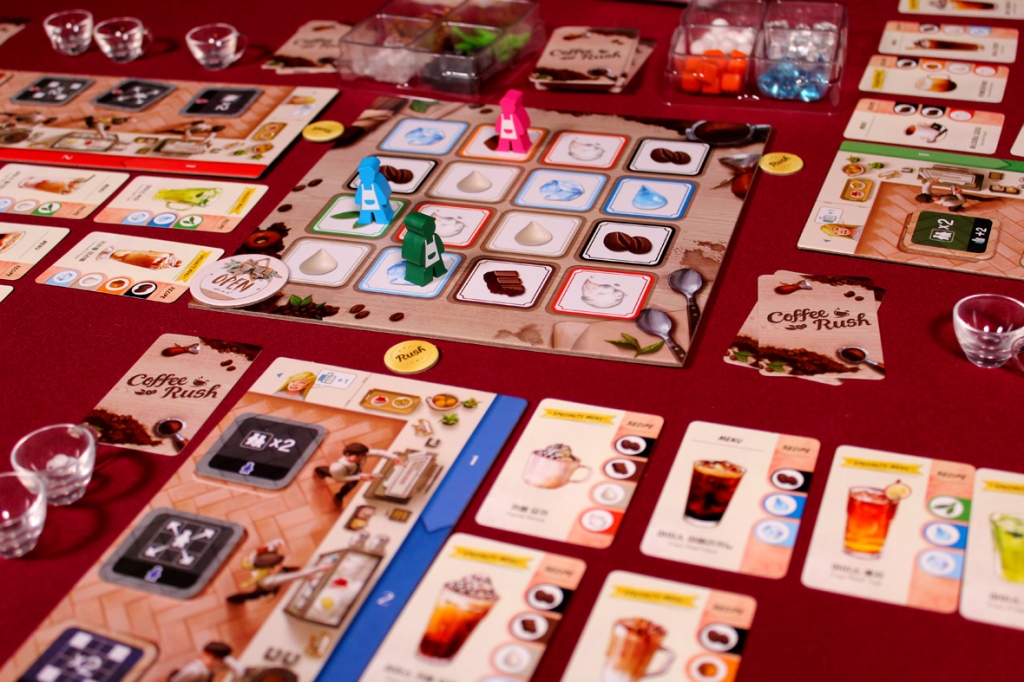
Overall, I think Coffee Rush is a bunch of fun! It appropriately captures the stress of those old mobile / Flash games where you had increasing numbers of orders piling up and only one of you. I think Overcooked does that as well, but Overcooked turns me into an ugly person when I play so it’s been a while. Not relevant! I like how much of your game is trying to navigate around other players for ingredients so that you can serve orders. It really makes you feel like you’re running around a crowded backroom as quickly as possible, which is wild for a turn-based game. Coffee Rush feels real-time, which I think is kind of amazing. Don’t get me wrong: it feels less fun if you find yourself sunk under the weight of the order queue, and to that end I usually ask players to be somewhat kind and let people re-evaluate moves. Several icons (milk / water, among others) can also be the kinds of things you get mixed up at first glance, and the game punishes mistakes (you have to empty the entire cup, which makes sense in real life). I usually will let players make a few Plausible Swaps in their first game if that’s what they obviously intended to go for or grab (or if they mistakenly took the wrong ingredient). We have to be a bit flexible. That all said, this is definitely a game for the spatial thinkers and the optimizers; you have to move fluidly through the grid to get what you want when you want it. I like that a lot! If you find that challenge thrilling, you’ve always wanted to run your own cafe, or you just like games with nifty components, Coffee Rush is a lot of fun! I’d recommend trying it out.
If you enjoyed this review and would like to support What’s Eric Playing? in the future, please check out my Patreon. Thanks for reading!